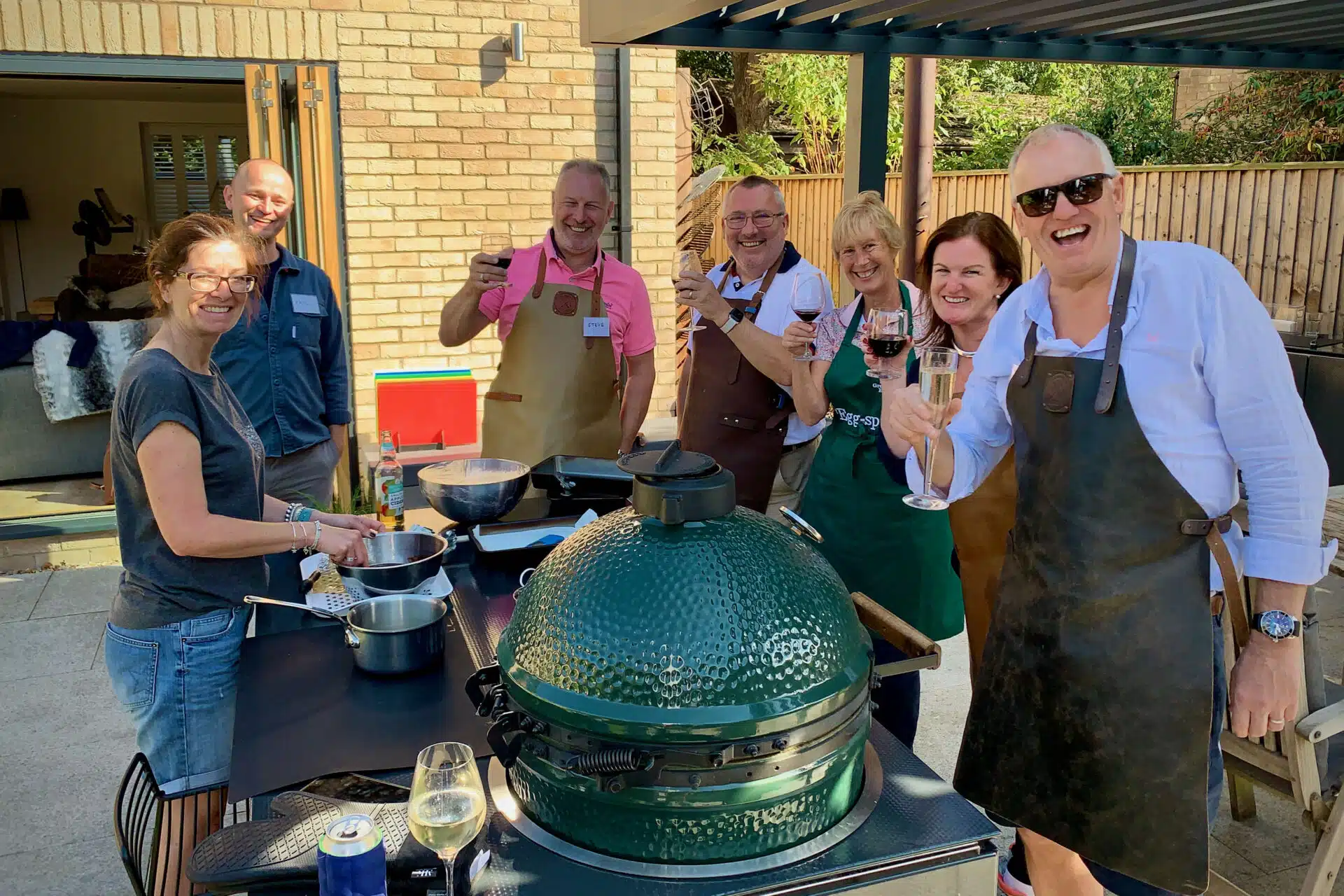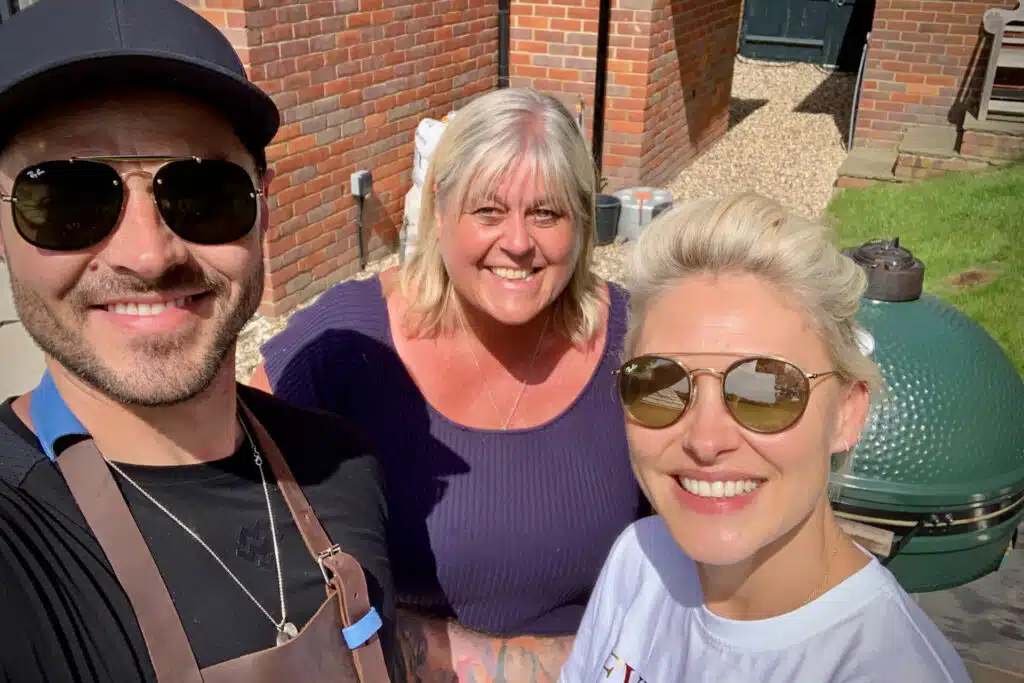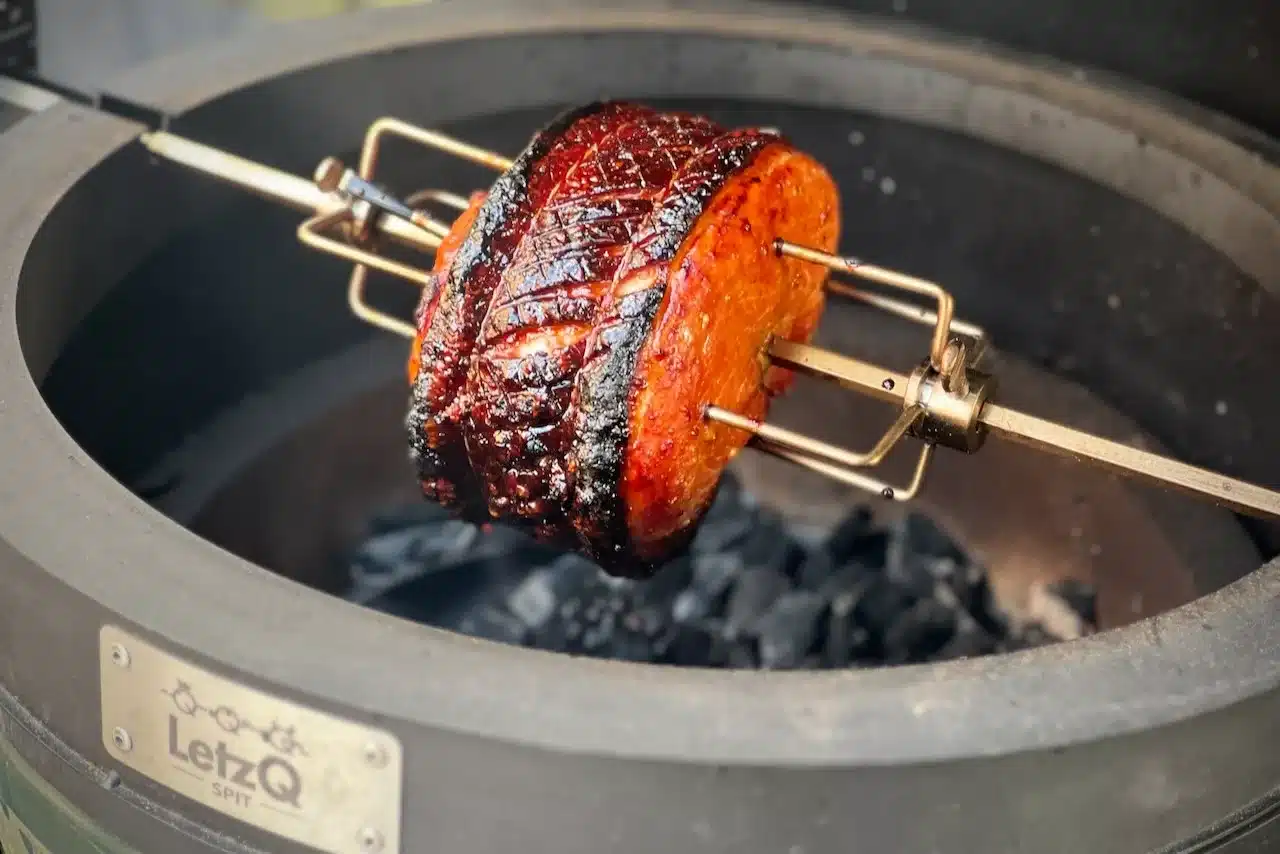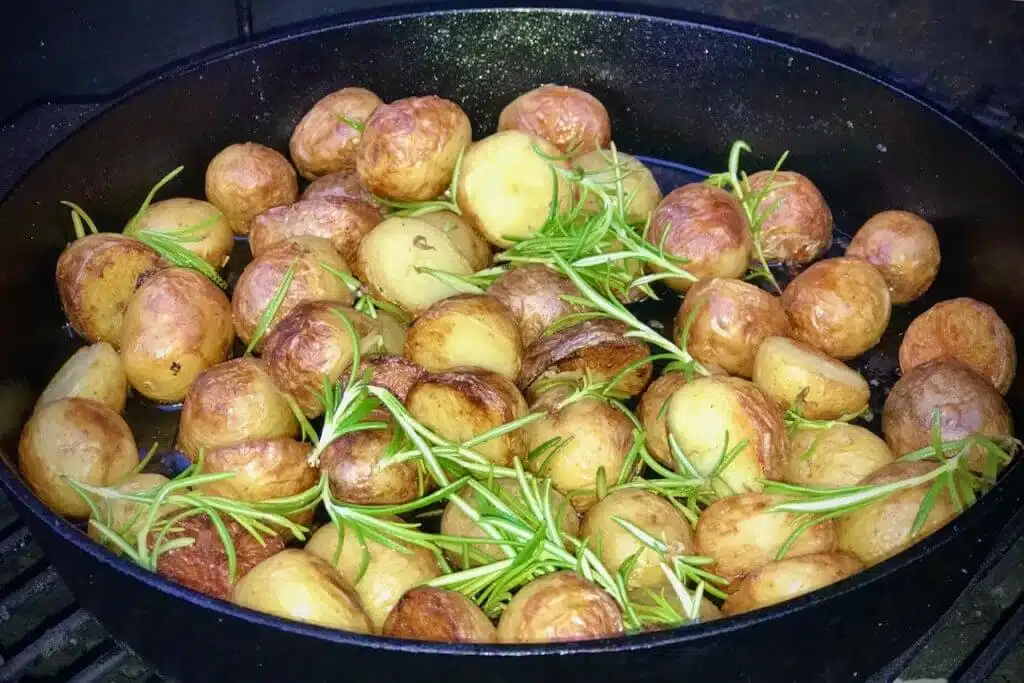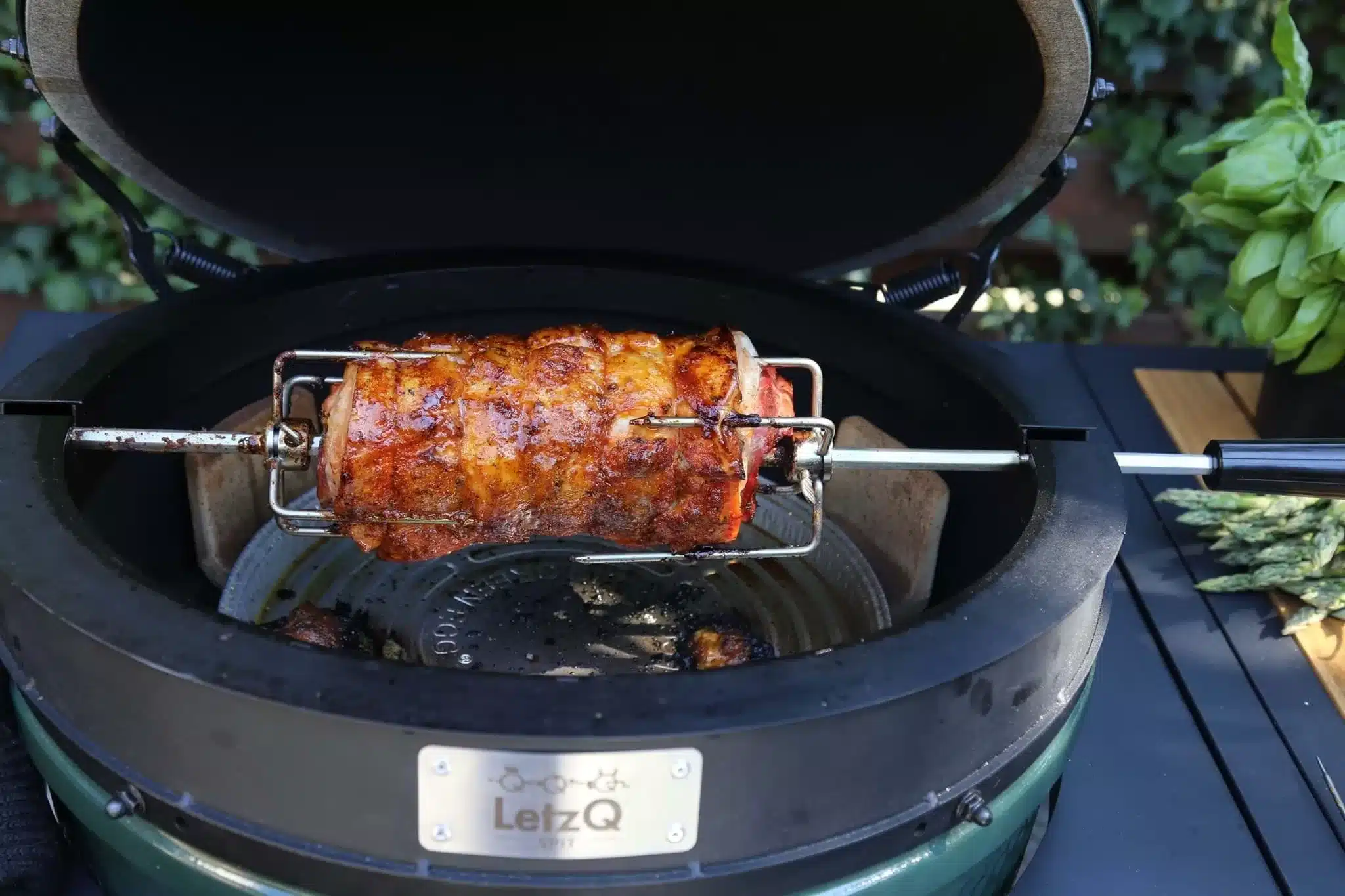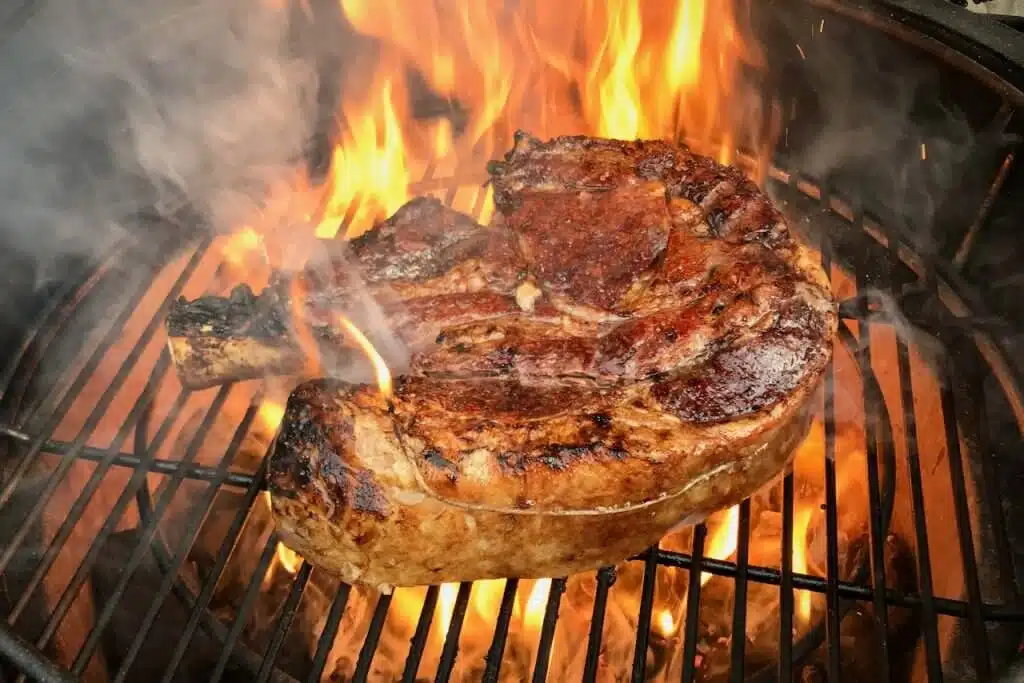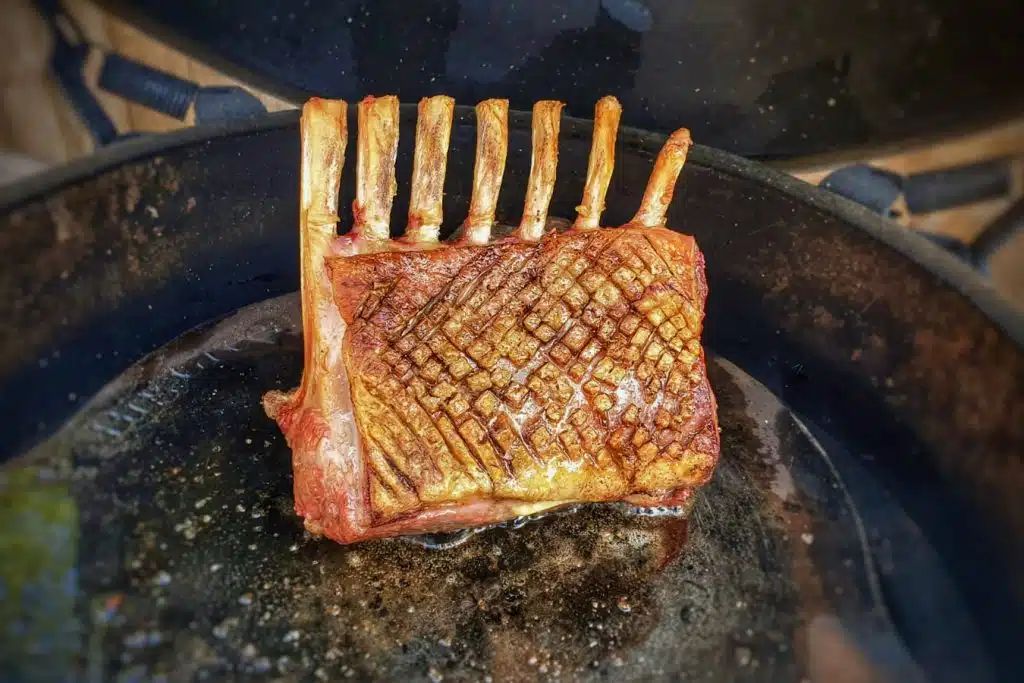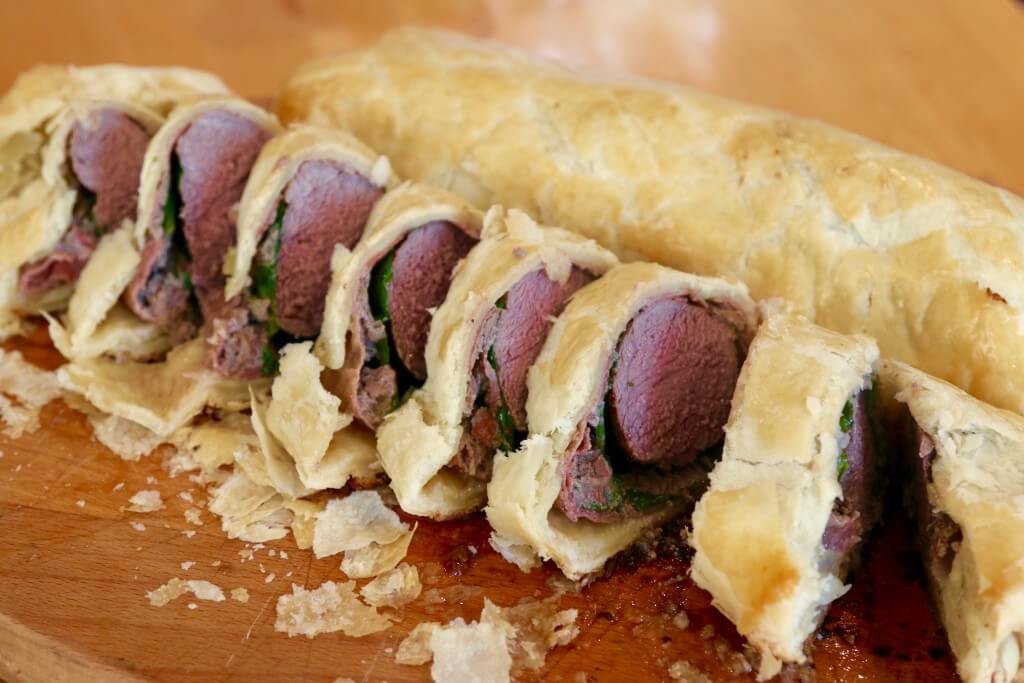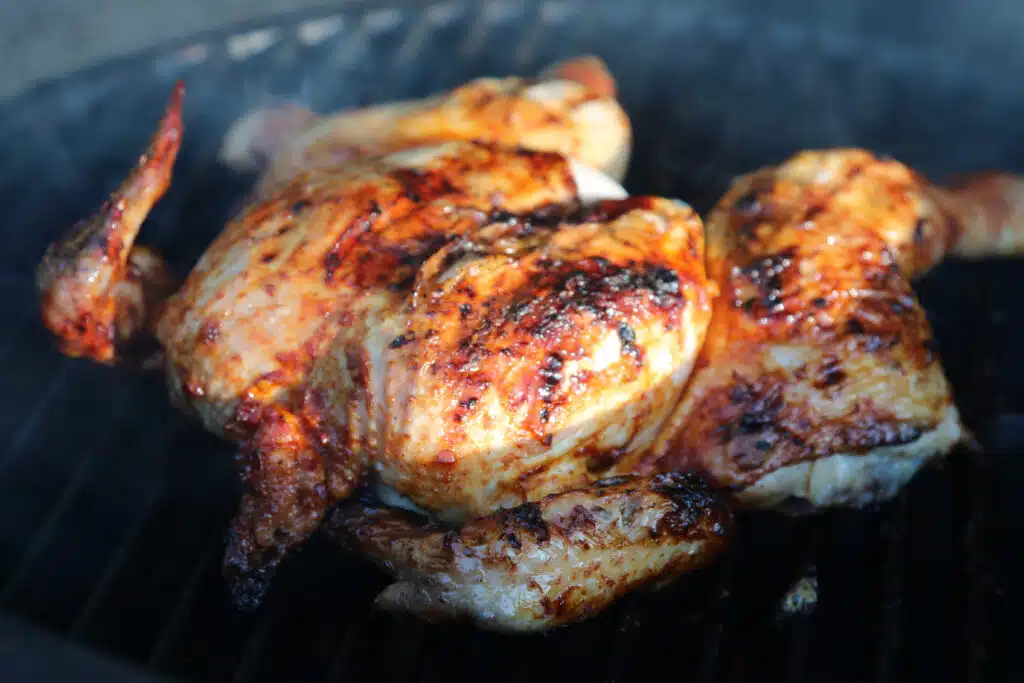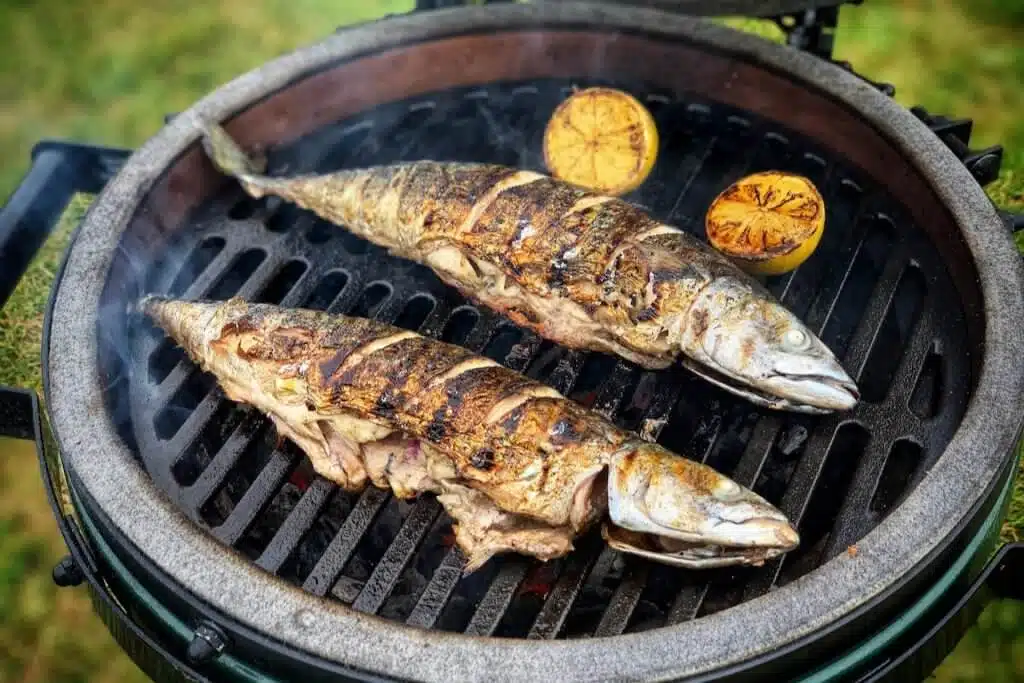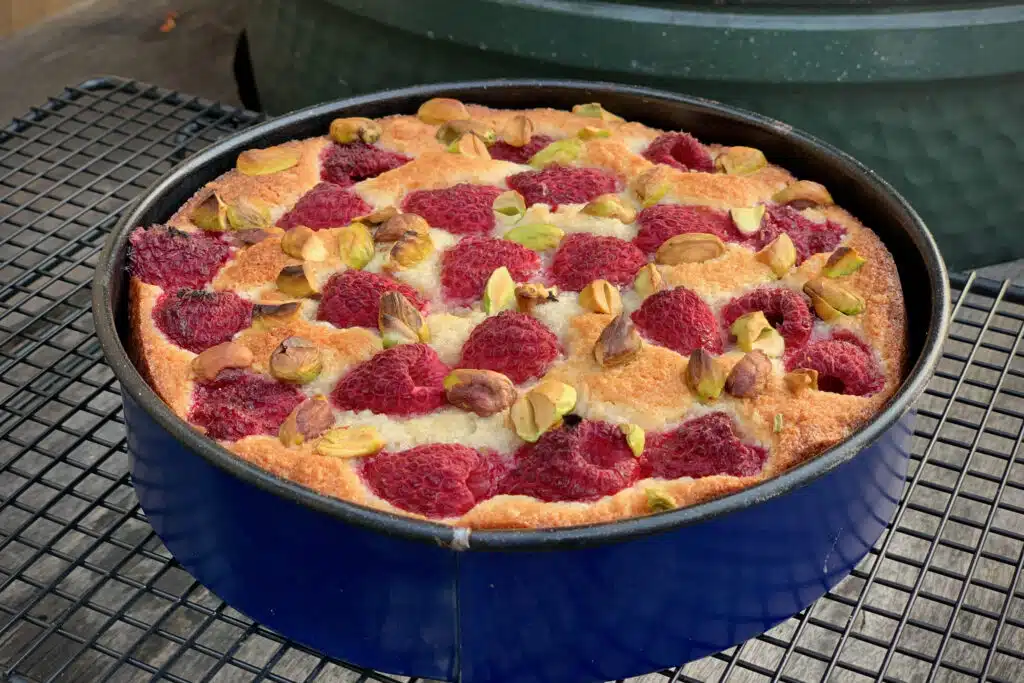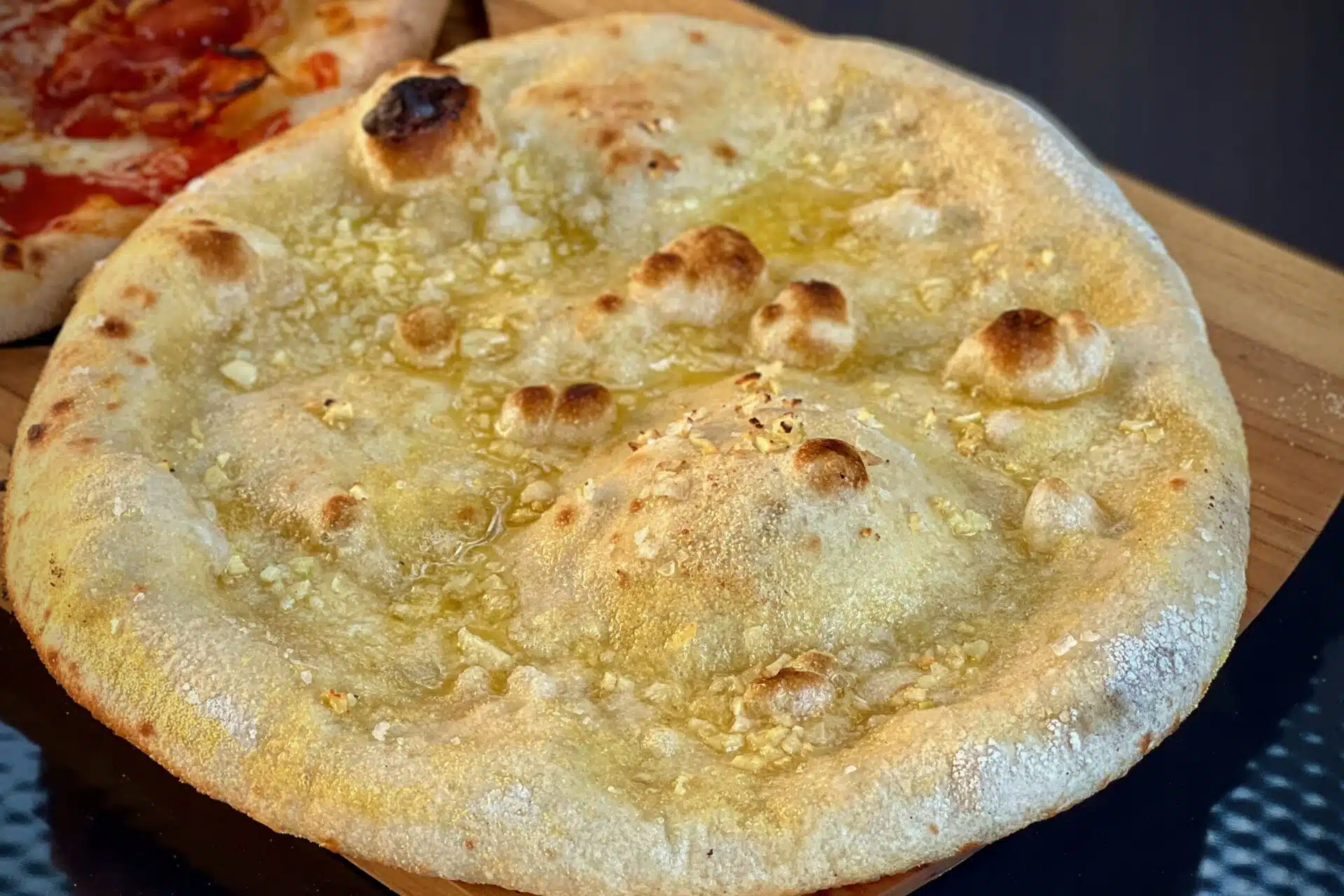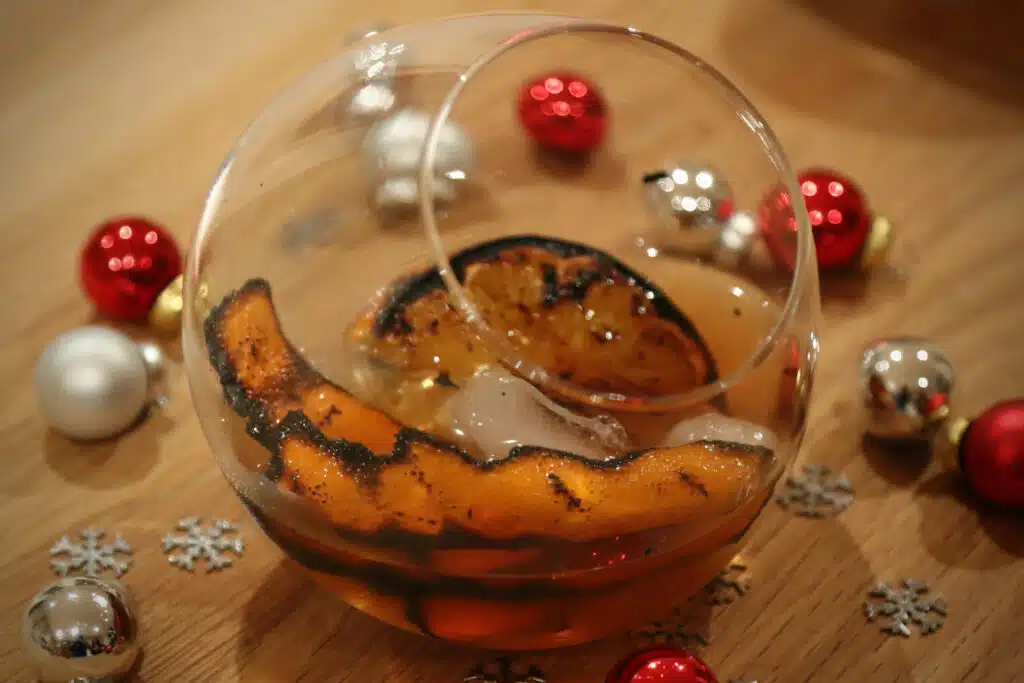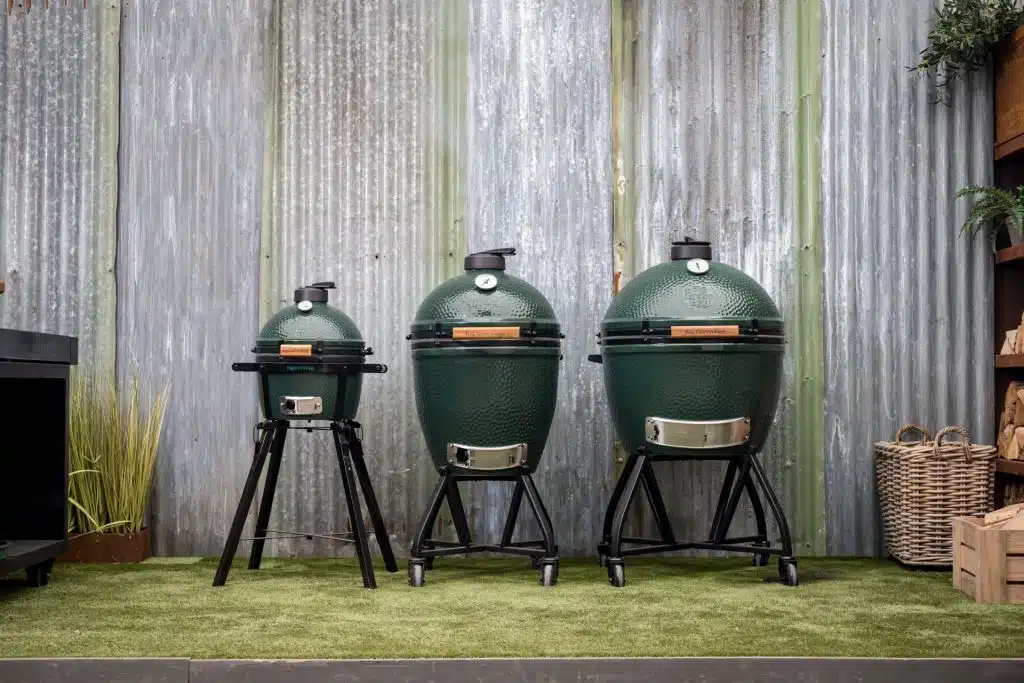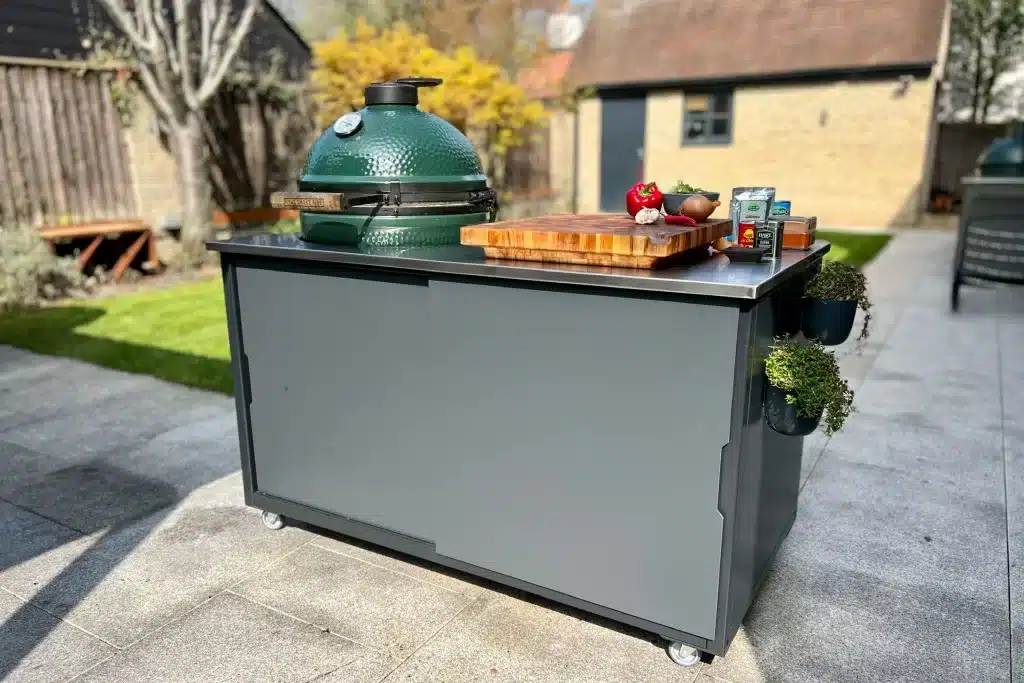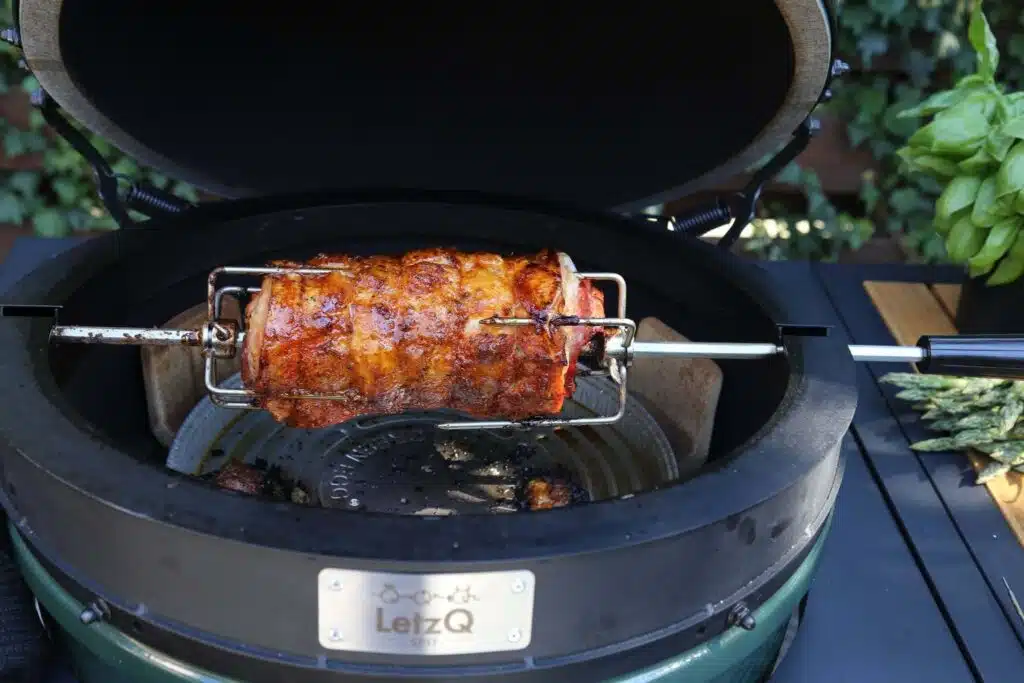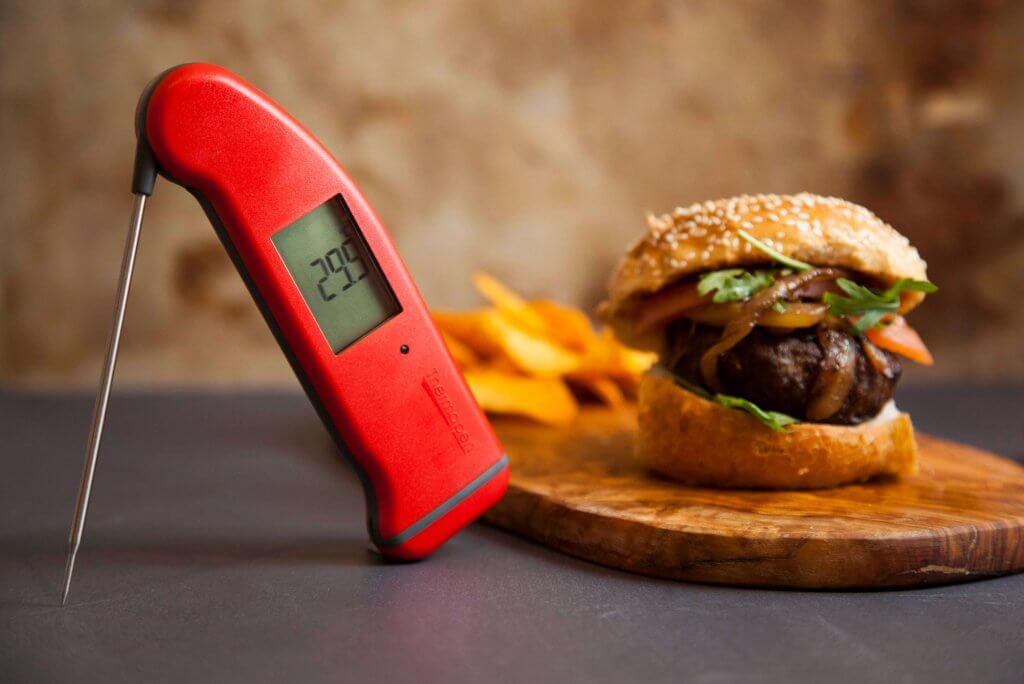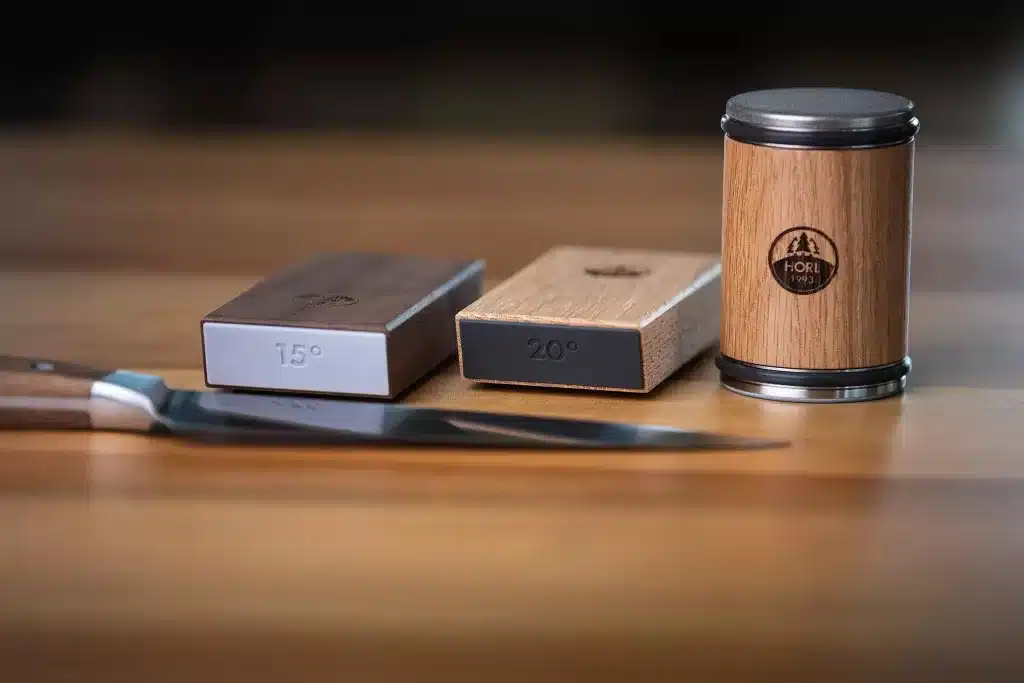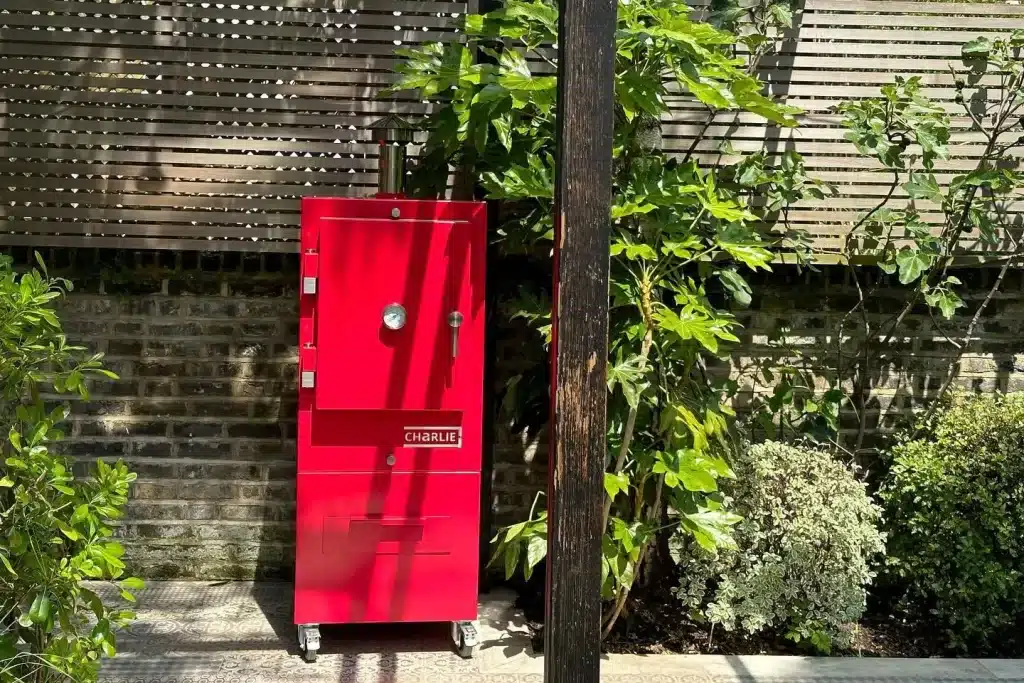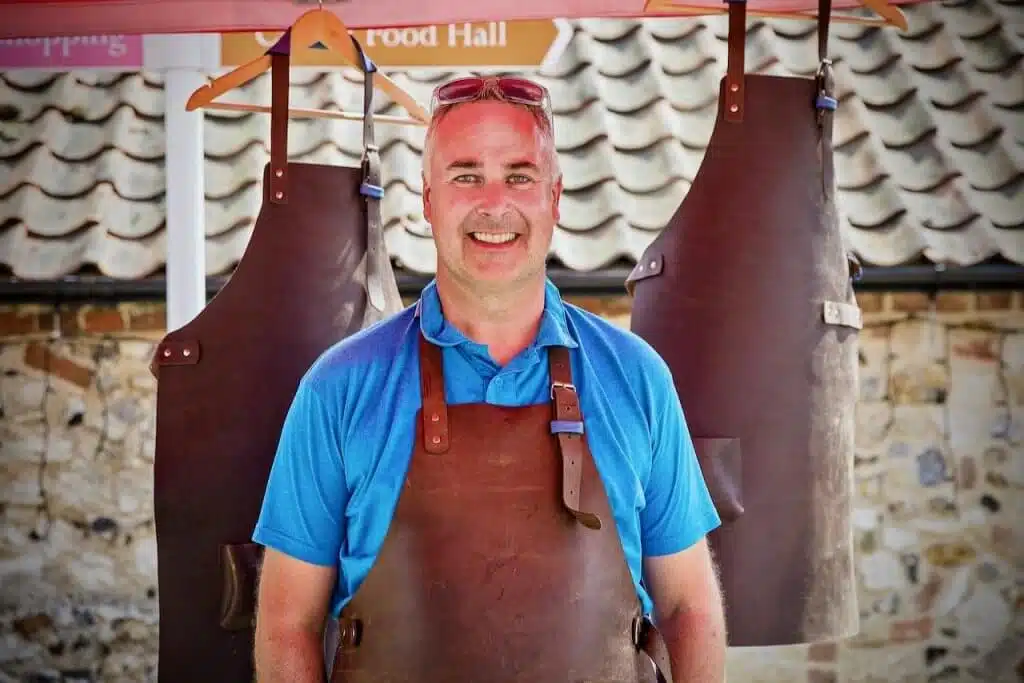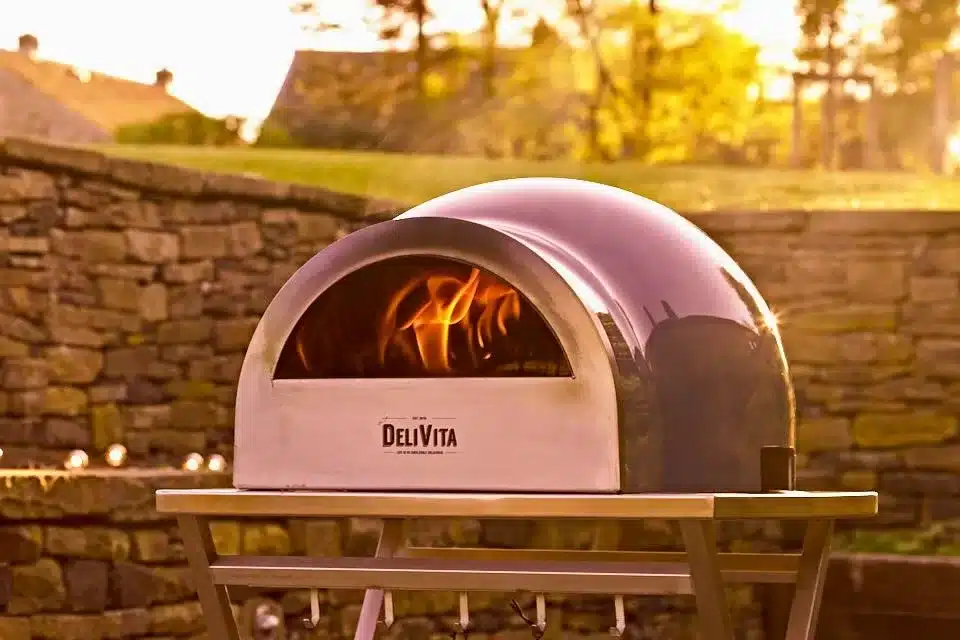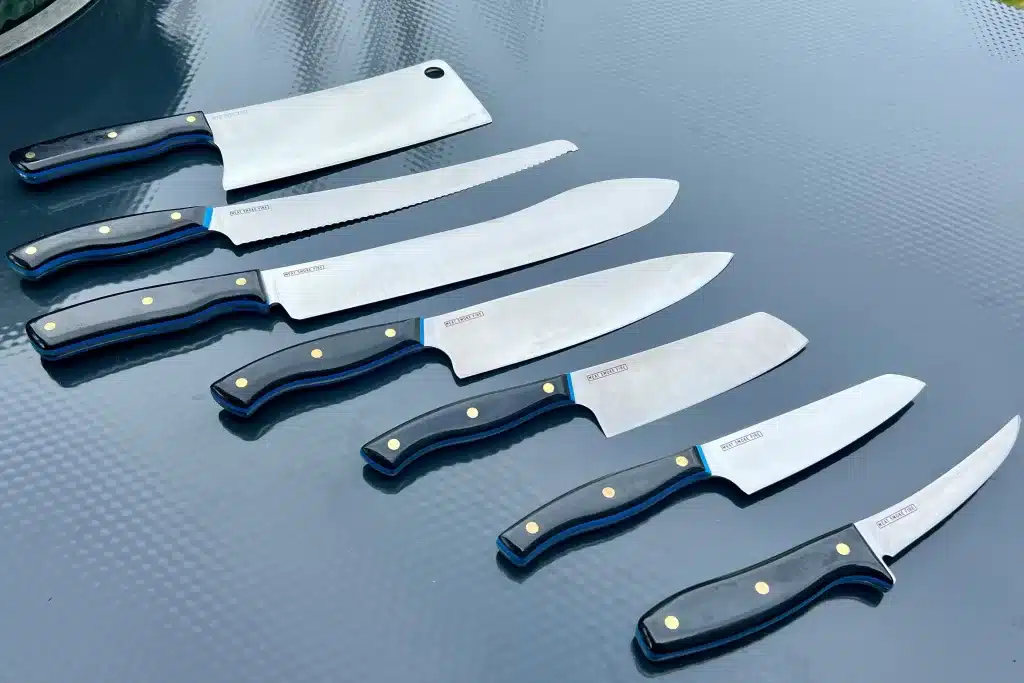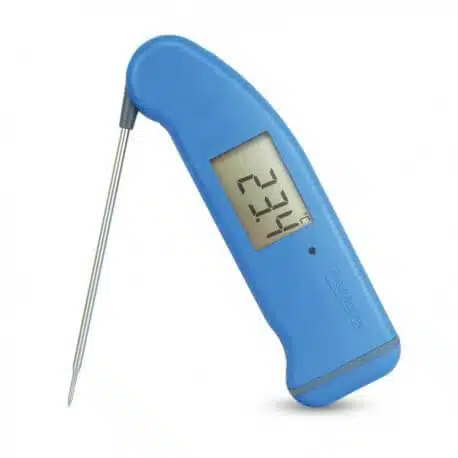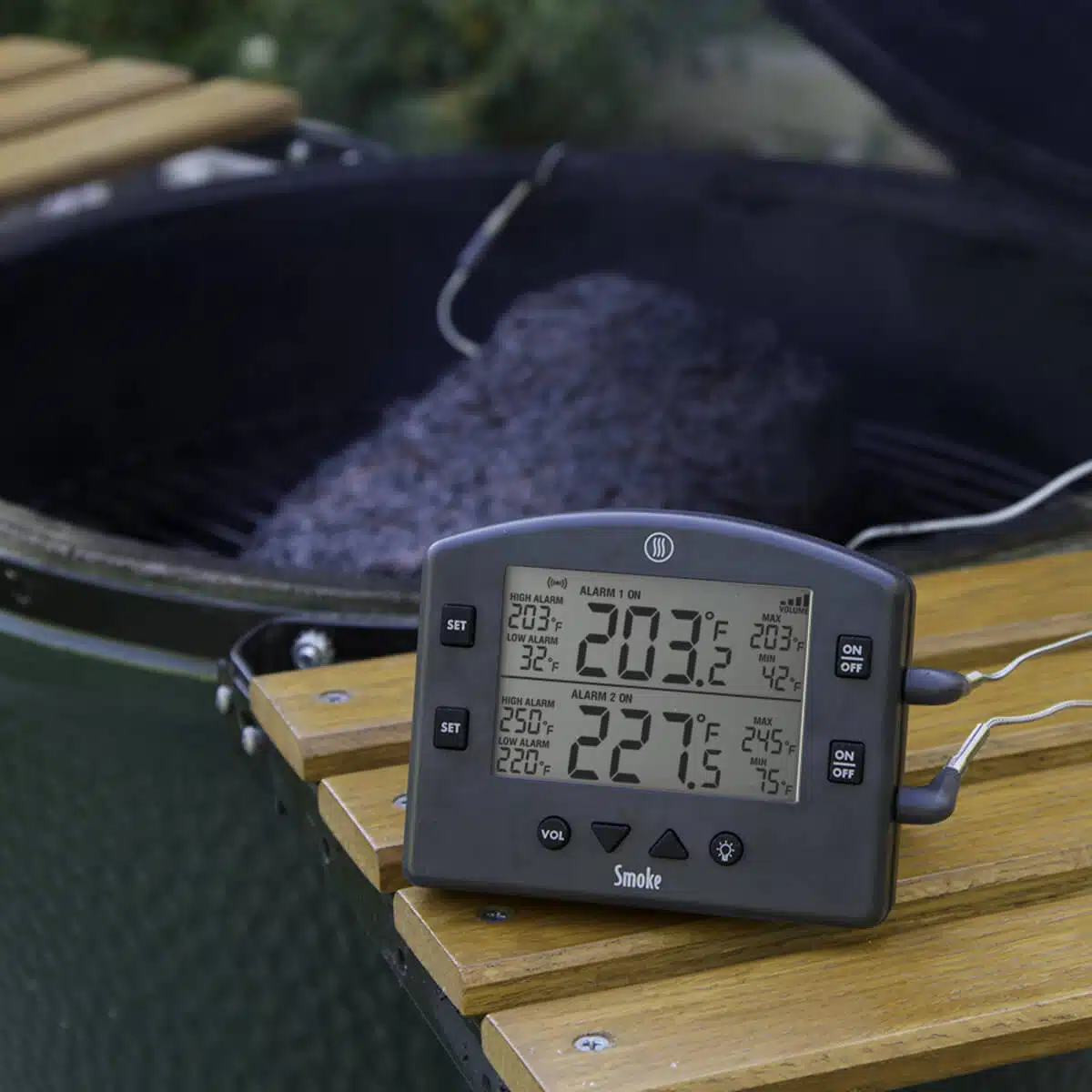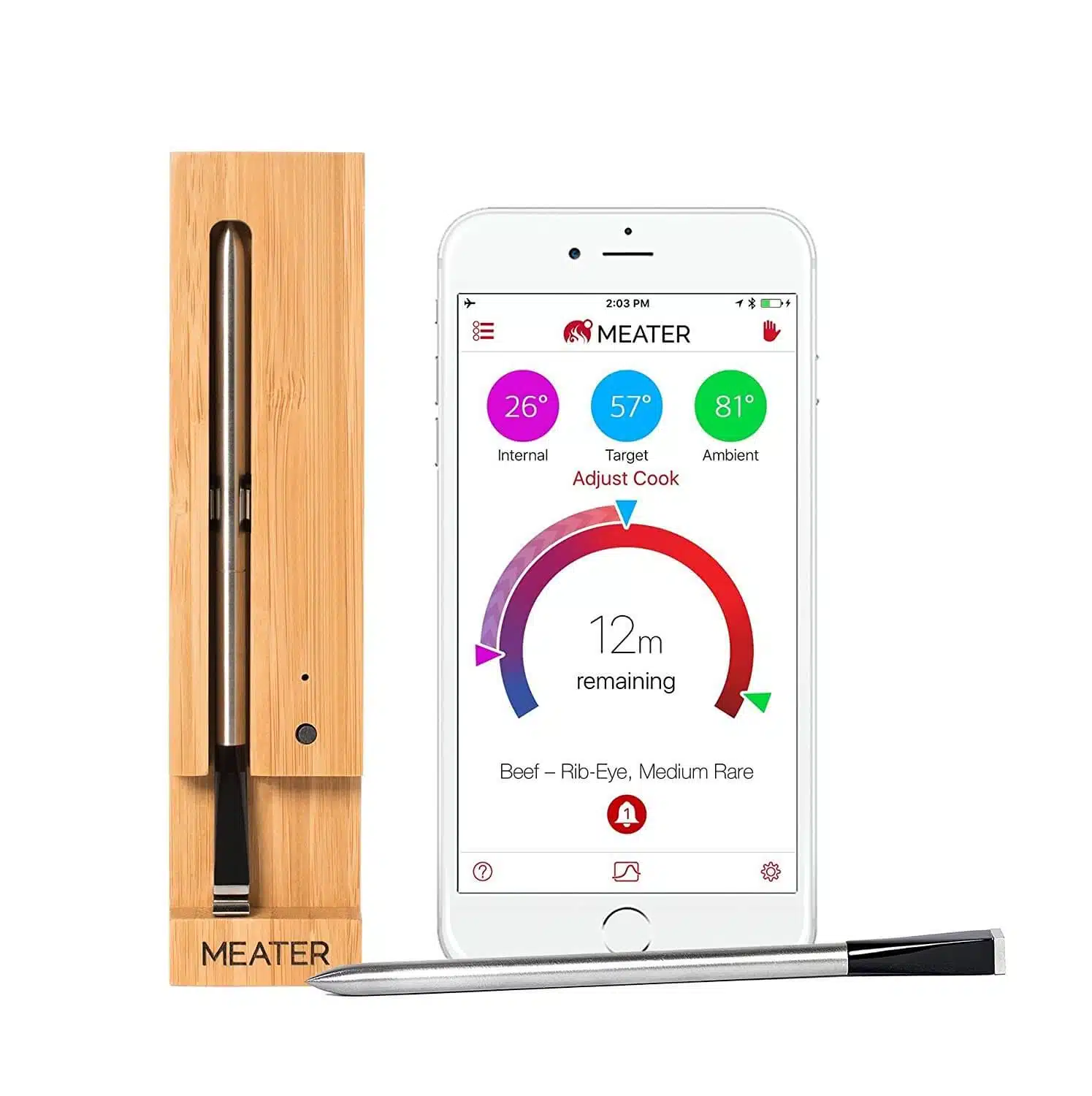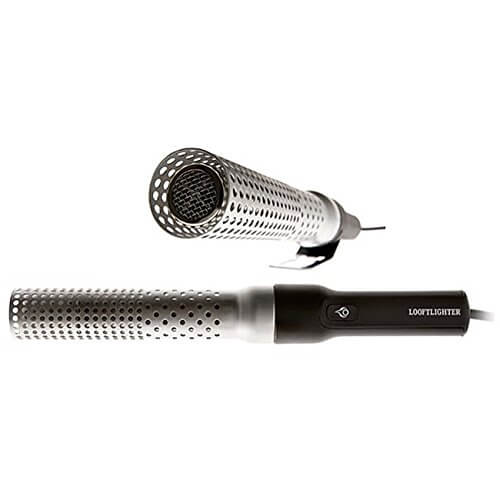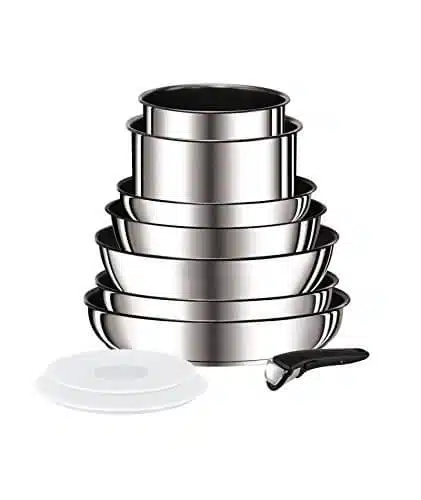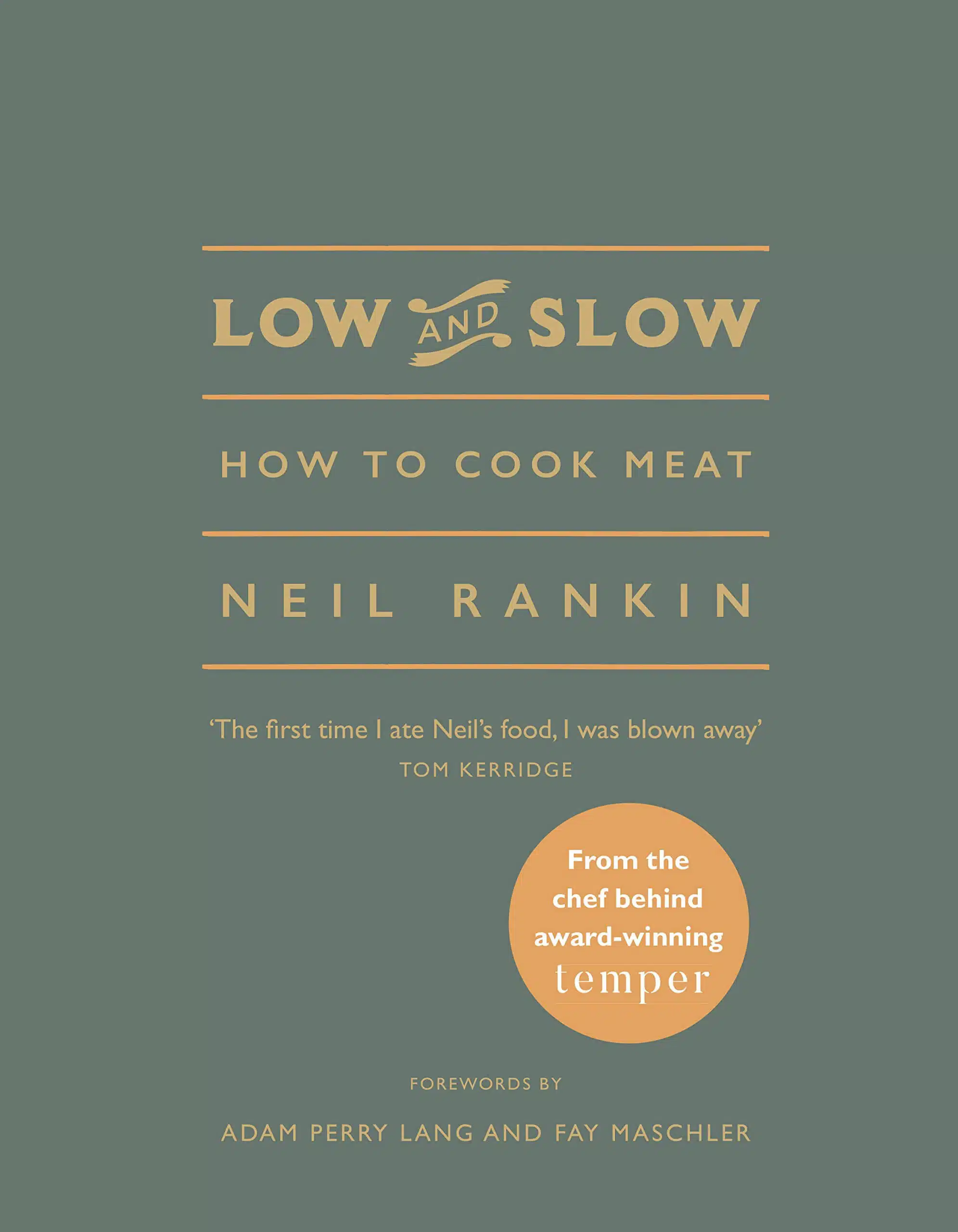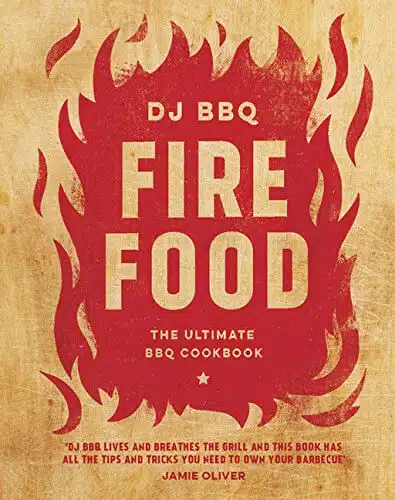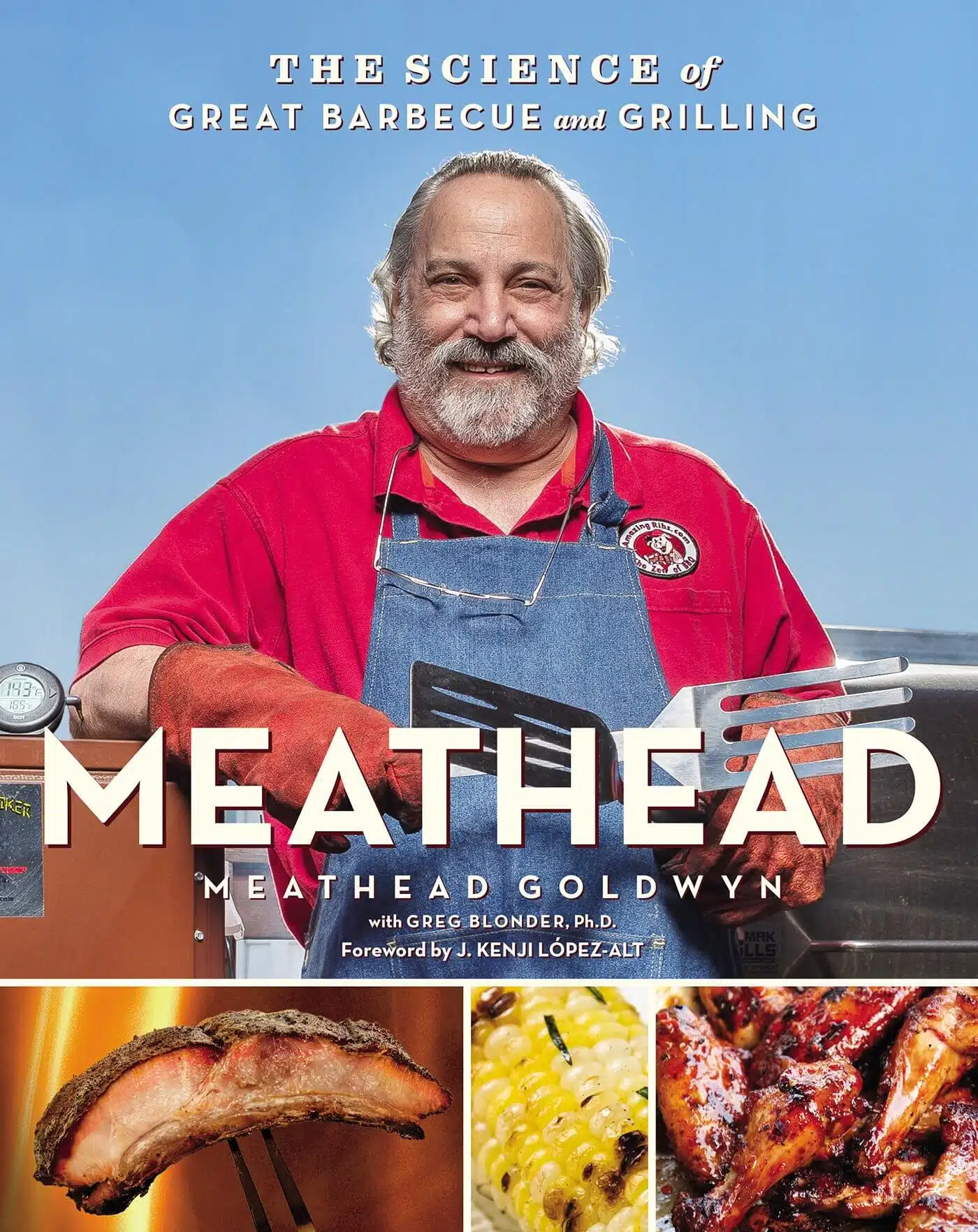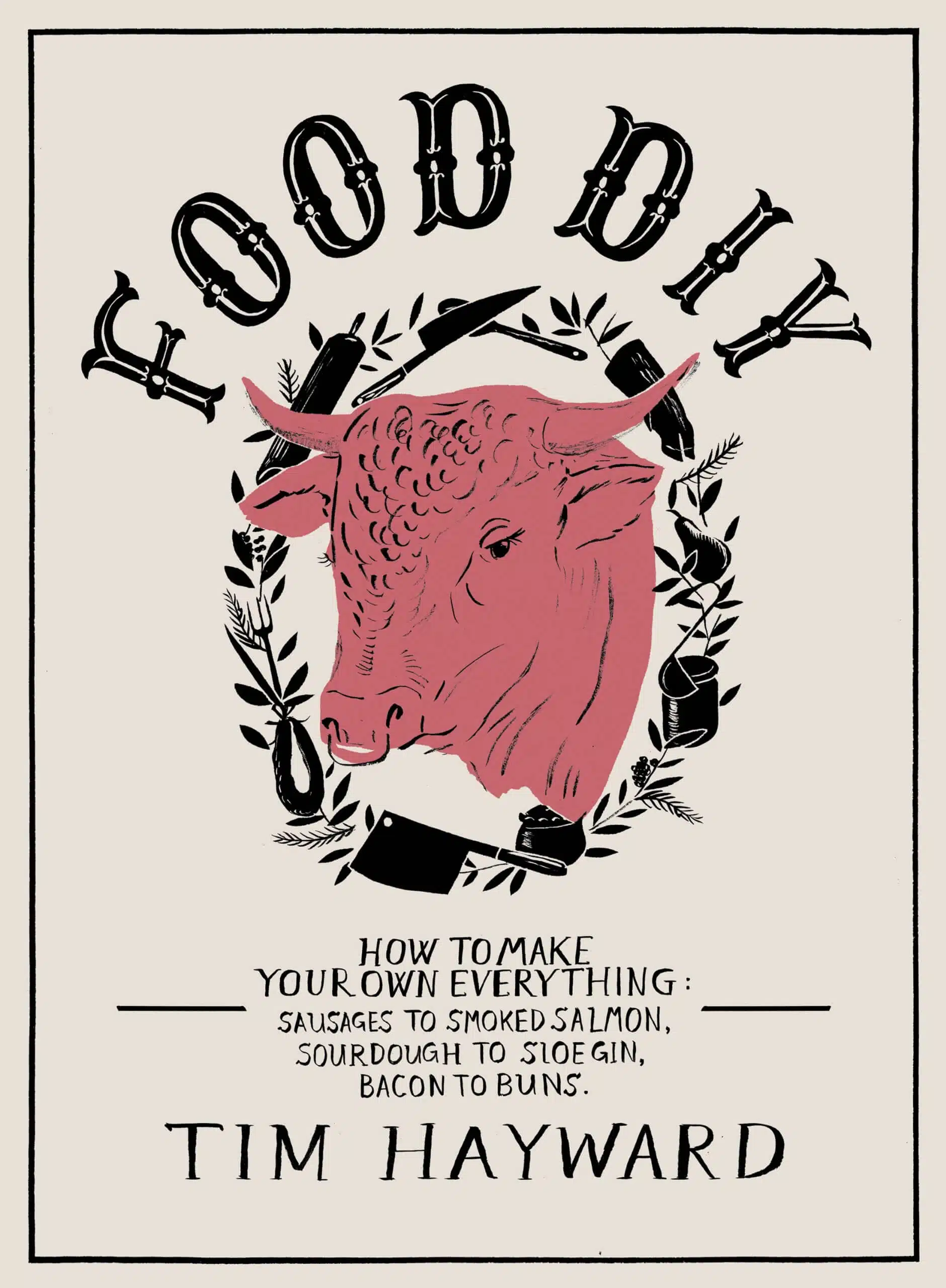


Recipes
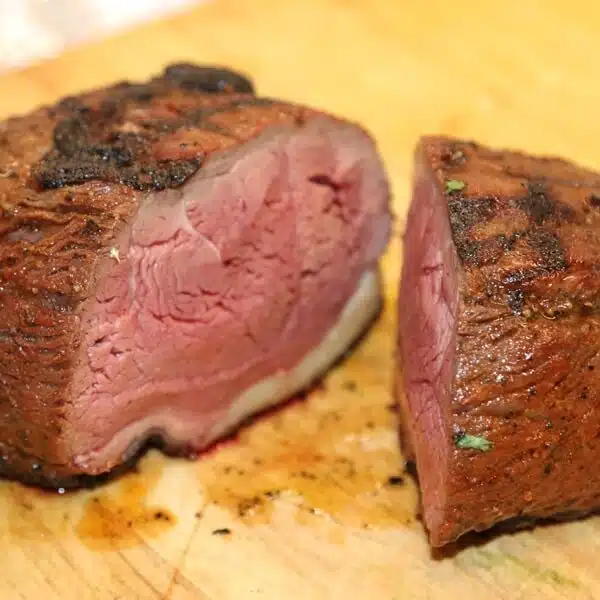
Reverse Seared Picanha
The technique we used here was a reverse sear where we slowly raised the temperature of the whole piece of meat by cooking it at 110°C until its internal temperature was 48°C (5°C below rare). We then fired up the BBQ to about 250°C and seared the outside of the picanha before resting it for about 15 minutes and serving in slices.
The initial cook was indirect, we used the plate setter feet up with the stainless grid on top. To that we added the meat and cooked slowly until the core temperature reached 48°C (5°C lower than the temperature we were aiming for as the last 5°C would be achieved when we seared the meat).
We then removed the plate setter and opened the air vents to raise the temp to 250°C. We used the stainless steel grid to sear the Picanha for about 3 minutes on each side.

Dirty Steak vs. Seared Steak
The recipe is here for the dirty steak.
We fired up two large Eggs in order to cook steak two different ways; one, using a cast iron grid to cook traditionally and on the other, dirty directly on the coals.
Cooking the steak dirty adds a really meaty flavour to the steak. It’s also a little controversial when you have friends over. Very little ash sticks to the steak. I think it’s a great technique.
The verdict was clear cut, you preferred the dirty steak. Remember you still need to rest the meat.
You can cook veg this way too. Daniel Clifford at Midsummer House in Cambridge cooks celeriac and beetroot directly on the coal, it’s divine. DJ BBQ does an amazing dirtly carrot recipe in his book Fire Food.

Roast Cauliflower with Truffle Oil and Black Sesame Dressing
The technique here was to cook on the back side of the plate setter. All I did was wipe down the back of the plate setter with a dry paper towel or foil.
We set up the Egg to cook at 180-200°C with the plate setter feet down.
I cut the cauliflower into about 7mm thick slices all the way through the cauliflower. I removed most of the really thick bit of stalk before cooking. I then added a touch of oil and some maldon salt to the slices (on both sides) and placed them directly onto the plate setter. We then cooked them for about 5 minutes on each side until they start to turn golden brown.
To this we added the dressing. A great addition is to sprinkle toasted black sesame seeds to give a little crunch.

Lamb Rack, French Trimmed
This is a great recipe to do with the cauliflower as it also can be cooked on the back of the plate setter (or a ceramic plancha).
Again we setup the Egg in an indirect configuration with the plate setter feet down. We set the temperature of the Egg to 180-200°C.
I scored the fat of the lamb rack in a diagonal pattern with the scoring about 3/4 cm apart. I then added a tiny bit of oil and generously seasoned the lamb with maldon salt.
I then cooked this directly on the plate setter, fat side down for about 15-18 minutes. At the last minute, we turned the lamb to add a little bit of sear to the edges.
I used a Thermapen to probe the meat. For medium rare, we were looking for an internal temp of 58°C. The lamb will continue to cook while it’s resting so take it off about 3°C before (55°C for medium rare).
Always rest your meat wrapped in foil.

Focaccia
This Italian bread is really simple to make and an easy first go at baking on the Egg.
Make a batch of my basic bread recipe and let it rise. Knock it back and split into two portions. Push out each of these dough balls into the bottom of a 30cm x 20cm baking pan, lightly oil the top and cover with cling film. Put to one side to allow it to rise again.
When ready, poke it with your fingers to make the dimples. Drizzle generously with olive oil and sprinkle with salt and herbs (we used rosemary).
Setup your Egg for an indirect cook with the plate setter feet up, stainless steel grid on top and the baking/pizza stone on top of that. Get your Egg to 220°C and give the baking stone a while to heat up, probably 20 mins..
Cook your focaccia in the tin on the baking stone for about 15 minutes until it’s both golden brown on the top, but also crunchy on the bottom. Allow it to cool on a wire rack before serving.

Cedar Planked Salmon
The plank is designed to smoulder while the salmon roasts on top of it, taking on the wood flavour as it cooks.
Soak the planks in water for at least 1 hour before you use them. You can also soak them in other liquids such as:
- Beer, lager or cider.
- A dilution of citrus juice.
Get your Egg to 180°C in a direct setup with just the stainless or cast iron grids. Dry the side of the plank you will put the fish on, for about a minute, by placing it cooking side down on the Egg.
Take your salmon fillets and place them skin side down onto the plank. Use the grill gripper to move the plank onto the Egg. I put a slice of lemon onto the salmon to show the smoke, not to add flavour. It looks pretty though.
Cook until the salmon has firmed up enough to show it is cooked (about 8-10 mins). Take off the plank with the grill grippers and put onto something heat proof.
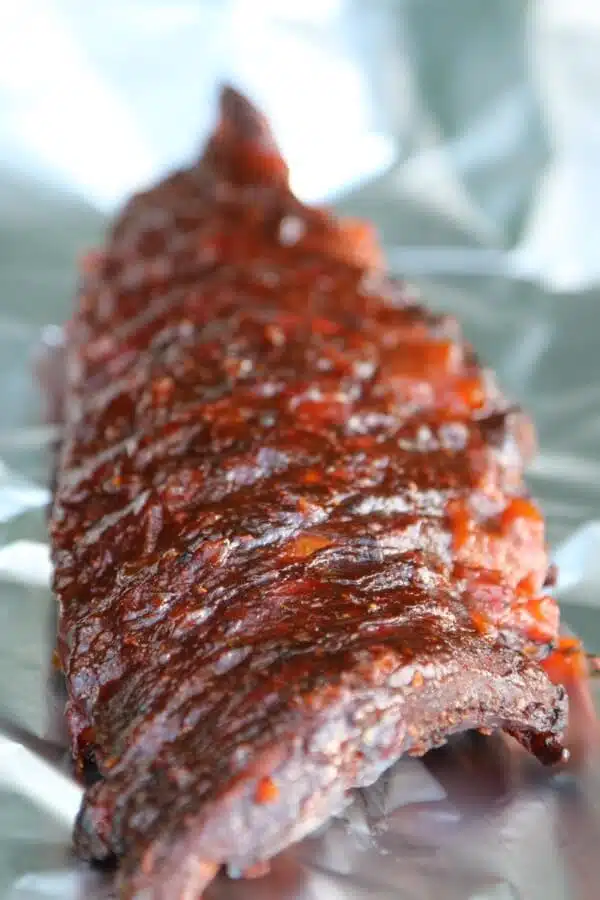
Smoked Ribs
The most popular way of cooking pork ribs is the 3-2-1 method where the meat is cooked for 3 hours, then wrapped in foil and cooked for a further 2 hours, then unwrapped and cooked for a final hour. These timings are sometime modified depending on how meaty your ribs are.
Only during the final 30 minutes of the cook do I apply any BBQ sauce as it has a tendency to burn.
We cooked the ribs on the Egg indirectly (plate setter feet up with the stainless grid on top) with the Egg set to 110°C. We use a shop bought rub on these, some Angus and Oink Porky White Chick.

Pulled Pork
Pulled pork is probably the easiest of the long low and slow cooks to do but also one that a lot of people mess up by not giving themselves time. A 3Kg piece of pork will take about 19 hours to cook properly, even this smaller piece took about 12 hours.
We rubbed the joint with Bad Byrons Butt Rub.
Normally I would take the skin off a shoulder joint to cook it but this one was so small I chose to leave it.
The following is a graph of your cook but the detail can be gained on the Flameboss site.
This cook was done indirect with the plate setter feet up and the stainless grid on top. I didn’t use a drip pan. What we were aiming for is an internal temp somewhere between 88°C ad 92°C. I set this cook to alarm at 90°C where I probed the meat to see if it was soft internally. We then rested the meat in a cool box wrapped in foil and old towels for a couple of hours. We then pulled the meat and mixed through a warmed up BBQ sauce.
You’ll see the meat went into a very short stall at 66°C. On a 3Kg shoulder I’ve seen a stall as long as 8 hours.
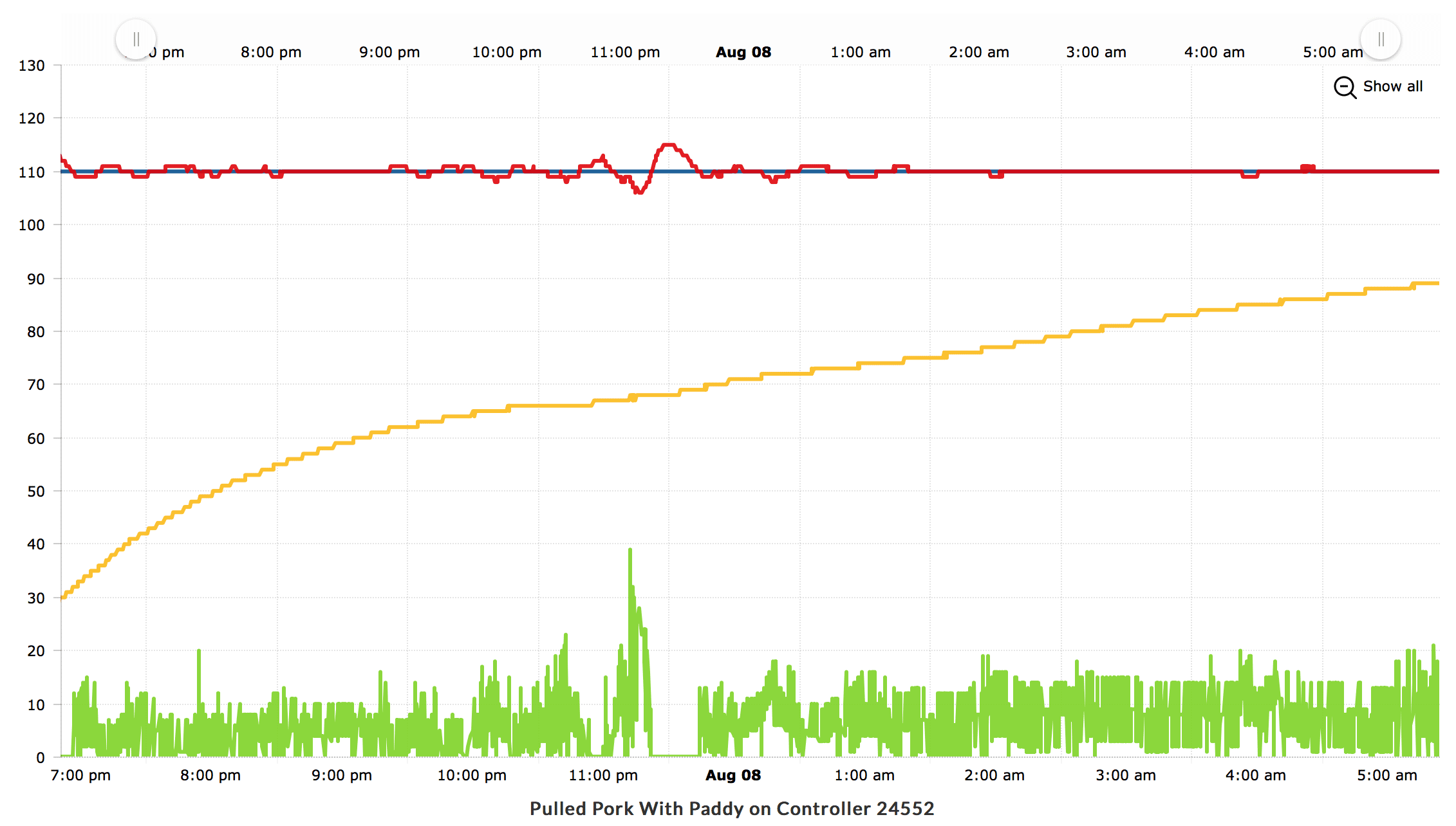

Apple Tarte Tatin
This was our last cook of the day.
We used one of the Tefal pans to make a caramel before addding the apples, butter and pastry. The caramel was cooked direct, we then baked it (indirect) on the Egg. You could always do the first stage on the hob inside.
Don’t stir the caramel, it’ll crystallise. Just leave it until the colour starts changing.
Be careful with the flip at the end, hot caramel burns. Make sure you’re not under pressure with a big audience :-).
Technique
What temperature should I cook at?
The following chart shows meat cooking temperatures depending on your cut of meat and your preferred level of cook:

Cooking temp guide from AmazingRibs.com
Which charcoal should I use?
Different charcoals will product different flavours. Some find the Big Green Egg charcoal quite smokey.
The Green Olive Firewood Company do charcoal that has a much milder smokey flavour, It’s made from SheOak. You need their restaurant grade lump wood charcoal.
Stag Charcoal also produce some great stuff in Hertfordshire. Look for their single species Ash or Birch for a less smokey cook.
When you really get into BBQ then look at some of the excellent charcoal from the Oxford Charcoal company. They have a very good reputation for their single species charcoals. They have a great chart on matching wood to meats and fish.
Do you soak Chips and Chunks?
I don’t soak my chips and chunks, I believe the Egg retains enough moisture that this isn’t necessary. Also how much water would a hardwood chuck actually soak up?
I do however soak my smoking planks. For these I want a bit of cedar flavoured steam,
Other great Pork cuts
A couple of pork cuts you should try are:
- Pork rib-eyes
- Pork collar joints
Different ways to cook a rack of lamb
We talked about other ways a rack of lamb could be cooked:
- On the cast iron grid – you could do this in single bone joints.
- On the coals, dirty – if you’re going to do this then you should do it in 2 or 3 bone segments.
How do you pull Pork Easily?
A set of pulled pork claws will make pulling a pork shoulder much easier. I used the Big Green Egg ones but there are others just as good and available from Amazon more cheaply.
How do I cook Ribs?
The most used method of cooking pork ribs is the 3-2-1 method where the ribs are rubbed with a BBQ rub and then cooked as follows:
- 3 hours indirect
- 2 hours indirect but wrapped in foil with a small spritz of apple juice (1 tbsp per pack)
- 1 hour indirect
During the last 30 minutes you can then apply BBQ sauce.
The rack of ribs should bend when they are cooked but not fall apart. The meat should pull from the bone but not fall off the bone.
If you’re cooking baby back ribs (the much smaller ones) you might want to reduce the timing to 2-1.5-1.
Try some of the rubs from Angus and Oink, their Sweet Bones and Butts rub mixed with their Porky White Chick is a great combo for ribs.
CURED MEATS AND THE PRO Q COLD SMOKE GENERATOR
If you’d like to make your own charcuterie or smoked salmon then you can use the Egg to smoke meat using a ProQ Cold Smoke Generator.
This will allow you to smoke meats for up to 10 hours per fill. You can use different wood dusts and I find the ones from HotSmoked.co.uk to be the best. You can even try discount code MP10 to get 10% off.
To cure salmon I use a 50/50 mix of sugar and salt for between 4 and 6 hours on the salmon. The recipe is here.
To get into curing meats there are a number of books. I started after reading Tim Haywards book, Food DIY.
Making the best baked potatoes
The Egg makes some of the best baked potatoes but you need to give it time. The key is to cook them indirect at about 180°C for 1.5 hours and then smother them with olive or rape seed oil and sprinkle them with sea salt. This will then crisp them up nicely.
The Stall or Plateau explained
We talked about how the tougher cuts of meat will go into a stall at around 65°C when they are cooked. This occurs as the outer layers of the meat dry out and form a bark.
The best resource on this is at AmazingRibs.com. Give it and the other articles a read. It’s a superb site.
What settings are needed for specific temperatures?
Setting the temperature on your Egg will vary slightly from Egg to Egg. However for a large Big Green Egg the settings are roughly as per the guide I have put together.
Rest your meat
Always remember to rest your meat after cooking it. This gives the meat structure time to relax and reabsorb moisture. It will make your meat taste far more tender and juicy.
There is a great article discussing whether this is a myth but I still like to rest my meat: http://amazingribs.com/tips_and_technique/mythbusting_resting_meat.html
Reverse Sear
When you do a reverse sear as we did for the Picanha, bring the temperature of the meat to 5°C less than you require it to be when finished. This is because the sear process will raise the temperature by another 5°C. For example, for a medium cooked steak you want it to be 63°C, therefore cook it until is has an internal temperature of 58°C before searing it.
Using Planks Multiple Times
A great technique for prologing the life of your planks is to soak them overnight, in lieu of them being soaked in just water, add flavourings to the water. Great flavourings are:
- Lemon and lime – lovely citrus flavours go well with fish
- Beer, cider or lager
Now instead of using the planks directly over the charcoal, use your ConvEGGtor (plate setter) feet up with the stainless steel grid and place the planks onto the stainless grid. You’ll still get the wood flavouring but it won’t burn your planks away.
Remember always place your planks on to a heat resistant surface when you take them off the Egg.
Using a cool box to rest meat
A cool box makes a brilliant tool to store your meat while it’s resting. It will keep it hot for longer periods too. I’ve kept 13kg of pork piping hot for over 10 hours using a cool box.
Once your meat is cooked, wrap it in several layers of aluminium foil and place it into your cool box. Then cover with bath towels and shut the lid. Make sure you use old towels as you’ll never get the smell of BBQ out of them!
Cleaning your Egg
The Egg doesn’t need to be cleaned that often but it is essential. If you ever notice your Egg isn’t heating up properly it’s likely to need a good clean.
Clean the ash from your Egg every five or so cooks. Use the ash tool to do this.
Every 12-15 cooks take the whole of the inside of your Egg out and brush down with the dustpan and brush. Some people hoover out their Eggs but if you do this make sure it is cold, I had a customer set her Henry on fire.
Lighting your Egg
Rake through the charcoal with the ash tool (the one with the 90° bent bit of metal on the end). Add new charcoal to the middle of the fire bowl making sure you fill it to just about where it meets the fire ring. Use just one fire starter in the middle of the charcoal. Leave the lid open 10 mins after lighting and then close the dome. Leave with both vents fully open until the Egg reaches 180°C then select the temp you want to cook at.
There is a great set of videos called the Tips Series that Big Green Egg UK put together.
Rust on your Egg cast iron cap and searing grid
Any cast iron product benefits from being treated to a little oil and then heated so the oil smokes and burns off. I tend to just use olive oil. I wipe down my dual function metal top (daisy wheel) with paper towel that is dipped in olive oil and then put it into a hot Egg when it’s been turned off. This will be enough to prevent rust.
You’ll need to repeat this process a couple of times a year.
Great video resources on cleaning and using your Egg
While working at Big Green Egg I put together the tips series. They’re really worth a look.
Equipment
Probe Thermometer
Every BBQ chef should have a Thermapen 4. It’s by far the best probe thermometer on the market. It’s super accurate, fast reading and waterproof and has a backlit screen for use when it’s not so bright outside.
You can buy it in my shop and I have set you up with a discount code to use at the checkout, CLASS10.
Wireless Thermometers
Thermoworks who make the Thermapen, have launched the Thermoworks Smoke in the UK. This is the best wireless thermometer in my opinion, it’s so easy to use and has super accurate probes. It’s not a replacment for a handheld probe thermometer like the Thermapen you already have but it does allow you to monitor cooks from the comfort of an armchair.
This was the device I used for the reverse seared picanha.
Bluetooth Thermometers
The Meater is a lovely piece of kit. It’s not quite as accurate as the other two thermometers but it does give a great guide and then you can use your Thermapen to check the cook, something I would always do anyway even when using the Thermoworks Smoke.
We saw that there was some temperature variance across the Picanha we cooked, so it’s always worth probing with a Thermapen to check.
You can buy this from Amazon.
The Looftlighter
The Looftlighter is my preferred method of lighting my Eggs at home. It’s a really souped up heat gun that uses electricity to blow hot air onto the charcoal and light it. It will start your Egg in about 60 seconds.
You can buy it from Amazon.
Pans with handles that clip on and off
They’re a product from Tefal that I picked up several years ago in France before I got into the Big Green Egg as they were perfect for the camper van. They’re called Tefal Ingenio and are available in the UK now from Amazon.
The handle clips on and off easily so you pop the pan in the Egg and take the handle off. I use mine all the time. They’re great for cooking tarte tatin.
Just be careful with non stick ones that you don’t get them too hot as the non-stick will start to break down.
Recommended Cook Books
Low and Slow
We talked about Neil’s book and his restaurant Temper when you asked about taking meat from the fridge to bring to to room temperature. Neil will often do things very differently.
Fire Food
Written by DJ BBQ (Christian Stevenson). DJ BBQ does a lot of cooking with Jamie Oliver. There are some fabulous and easy recipes in here.
There is a whole section on dirty cooking (cooking directly on the charcoal). I have done the dirty carrots and can highly recommend them. The book was only published recently.
Meathead
This is by Meathead Goldwyn, the man behind the AmazingRibs.com website. It’s got some really good stuff on technique as a well as some good recipes. It’s available on Amazon from this link.
Food DIY
Tim Hayward is a Cambridge based food writer, restauranteur and chef. He’s judged on the BBQ scene. His book contain loads of great curing recipes as well as BBQ stuff. I really love it and use the recipes all the time. It’s available on Amazon from this link.
